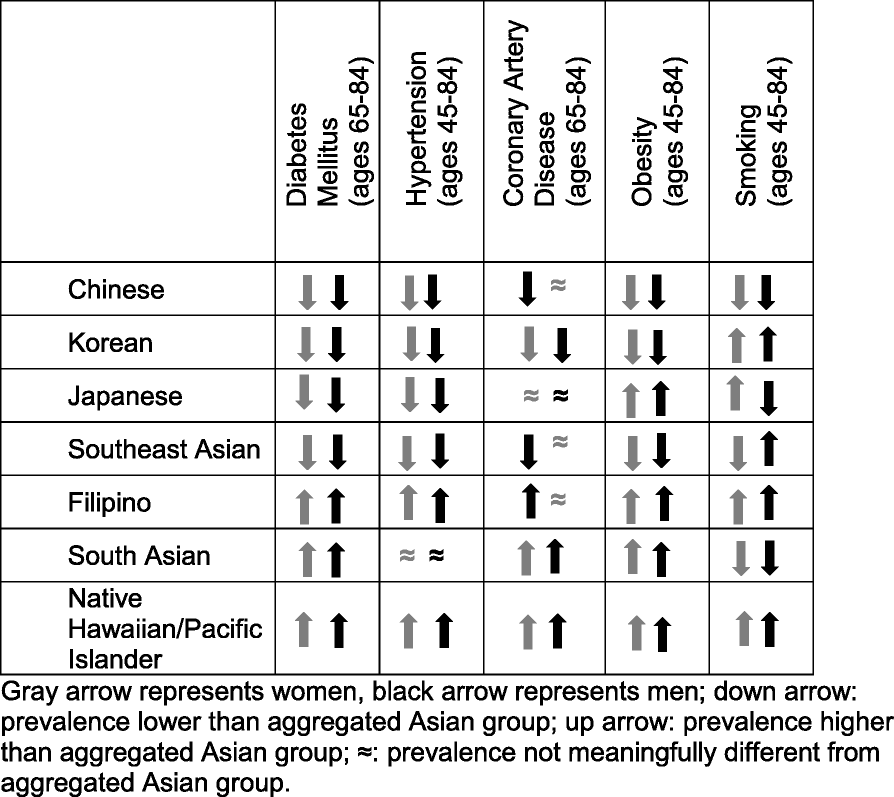Asian American and Pacific Islander Health Risks
A study highlights the need to understand differences in health risks among AAPI subgroups.

Health assessments that aggregate data for all Asian Americans mask meaningful differences across specific Asian American and Pacific Islander (AAPI) ethnic groups, according to a review in BMC Public Health.
The review examined the prevalence of diabetes, hypertension, coronary artery disease, obesity and smoking among middle-aged and older adults in multiple AAPI ethnic groups to determine how risk factors vary. Researchers assessed a cohort of 1.4 million adults aged 45–84 who were Kaiser Permanente Northern California health plan members during 2016. The group included approximately 274,910 Asian Americans (Chinese, Filipino, Japanese, Korean, Southeast Asian, South Asian and other) and 8,450 Pacific Islanders.
The review revealed large differences in health burdens across Asian American and Pacific Islander ethnic subgroups. Overall, Filipinos, South Asians and Pacific Islanders tended to have a higher prevalence of chronic conditions than the aggregated Asian group, while East Asians (Chinese, Korean, Southeast Asian and Japanese) had a lower prevalence.
However, this pattern did not occur for obesity, as both men and women in the Japanese group had a higher prevalence of obesity than the aggregated Asian group. Chinese, Koreans and Southeast Asians had a lower prevalence.

Source: BMC Public Health
These findings demonstrate the importance of differentiating data for Asian ethnic groups to assess actual health risks and burden across subgroups. Understanding how chronic health conditions and cardiovascular risk factors affect AAPI populations can help wellness practitioners, healthcare professionals and fitness professionals better support their AAPI communities.
See also: Asian Americans Face Significant Health Risk
AAPI Resources
With a rise in anti-Asian hate crimes over the past year, the need to focus attention on AAPI communities, allocate resources and amplify AAPI voices has become clearer. When it comes to health and wellness, awareness around meaningful differences within AAPI communities can help assess needs and provide appropriate services.
Consider how you, as a fitness professional, can support the various AAPI communities in your area. Below are some helpful resources for you and your AAPI clients:
- National Asian American Pacific Islander Mental Health Association
- Stop AAPI Hate
- Bystander Intervention Training by Hollaback & Asian Americans Advancing Justice
- Asian Americans for Community Involvement
- Asian Health Services: Specialty Mental Health
See also: Diversity, Equity and Inclusion in Fitness: What’s Your Strategy?





